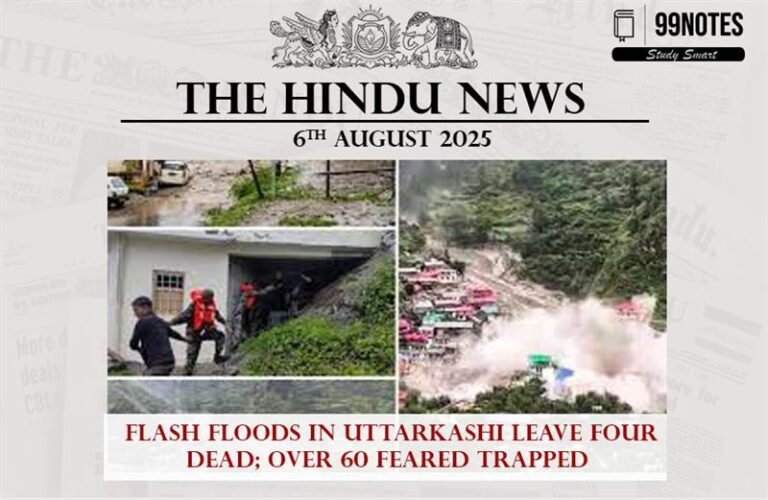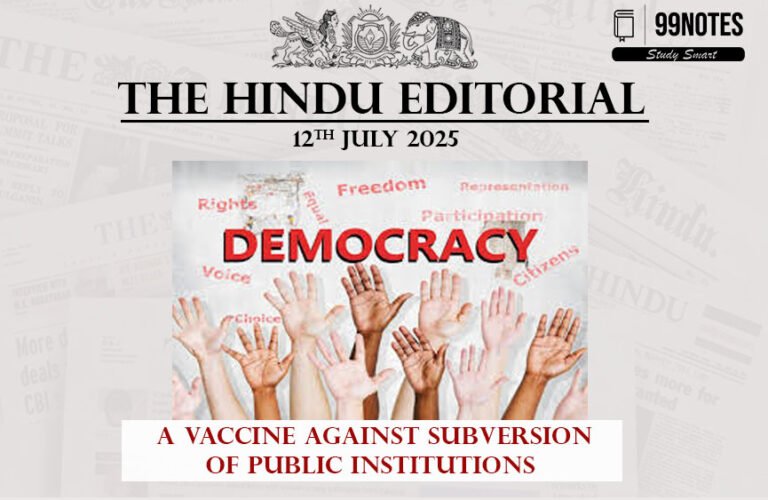16 June 2025: The Hindu Editorial Analysis
1. The rise of maritime Asia and what it means for India
Source – Editorial Page, The Hindu, Delhi Edition
| Topic: GS Paper 2 (International Relations) |
| Context |
|
Content:
-
Maritime Asia’s Emergence:
-
Asia is the global hub for shipping and trade, especially the Indian and Pacific Oceans.
-
Strategic choke points like the Strait of Malacca and South China Sea are crucial.
-
-
India’s Maritime Strategy:
-
Focus on SAGAR (Security and Growth for All in the Region).
-
Naval modernization and increasing regional maritime diplomacy.
-
-
Challenges:
-
China’s growing naval assertiveness.
-
Infrastructure vulnerabilities (ports, shipping routes).
-
Need for deeper engagement with ASEAN and Quad.
-
-
Way Forward:
-
Bolstering coastal infrastructure.
-
Strengthening alliances through BIMSTEC, IORA, Quad.
-
Investing in blue economy and maritime technology.
-
|
Practice Question: India’s maritime policy must adapt to the strategic and economic shifts in the Indo-Pacific. Discuss the challenges and opportunities for India in Maritime Asia (GS2 | 250 words | 15 marks) |
2. A decade of GST: successes and the road ahead
Source – Editorial, Page 6, The Hindu
| Topic: Editorial Page, The Hindu, Delhi Edition |
| Context |
|
Content:
-
Successes:
-
Unified indirect tax system.
-
Increased tax compliance and digital tracking.
-
Streamlined logistics and reduction in cascading effect.
-
-
Issues:
-
Complexity due to multiple tax slabs.
-
Concerns from states over compensation.
-
Compliance burden on small businesses.
-
-
Reforms Needed:
-
Simplifying slabs and rate rationalization.
-
Enhancing autonomy of the GST Council.
-
Strengthening input tax credit system.
-
|
Practice Question: Evaluate the performance of GST in achieving its objectives after a decade of implementation. What reforms are necessary to improve its efficiency and equity? (GS2 | 250 words | 15 marks) |
3. Inclusion in census: the case for caste data
Source – Editorial Page, The Hindu, Delhi Edition
| Topic: GS Paper 1 & 2 (Society and Governance) |
| Context |
|
Content:
-
Arguments for Caste Census:
-
Enables targeted welfare.
-
Helps assess real social and economic conditions.
-
Strengthens evidence-based policy making.
-
-
Concerns:
-
Potential for deepening caste identities.
-
Complexity in data collection and categorization.
-
Political misuse of data.
-
-
Constitutional & Administrative Aspects:
-
Mandate under the Census Act.
-
Role of Registrar General and state cooperation.
-
|
Practice Question: Should caste be included in the decennial Census in India? Examine the pros and cons with respect to governance and social equity. (GS2 | 250 words | 15 marks) |
Read more about – 14 June 2025: The Hindu Editorial Analysis



